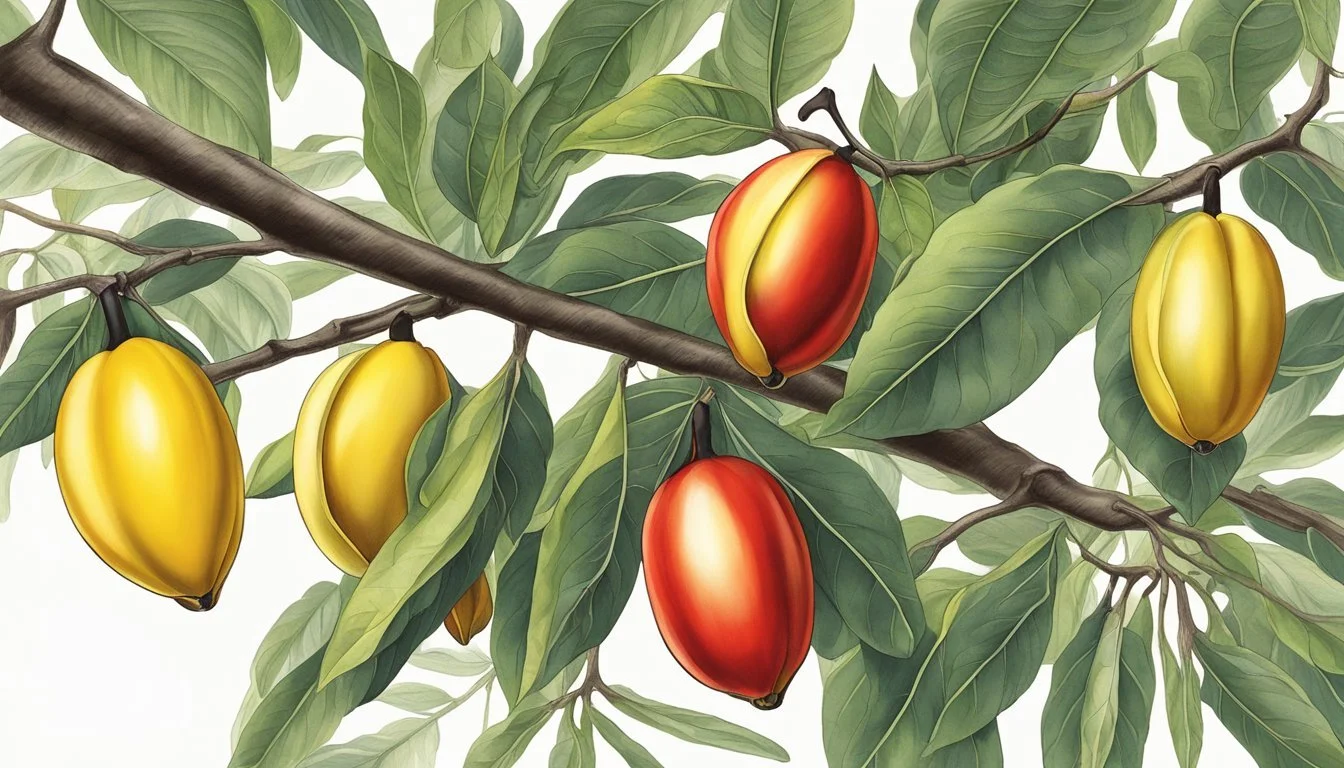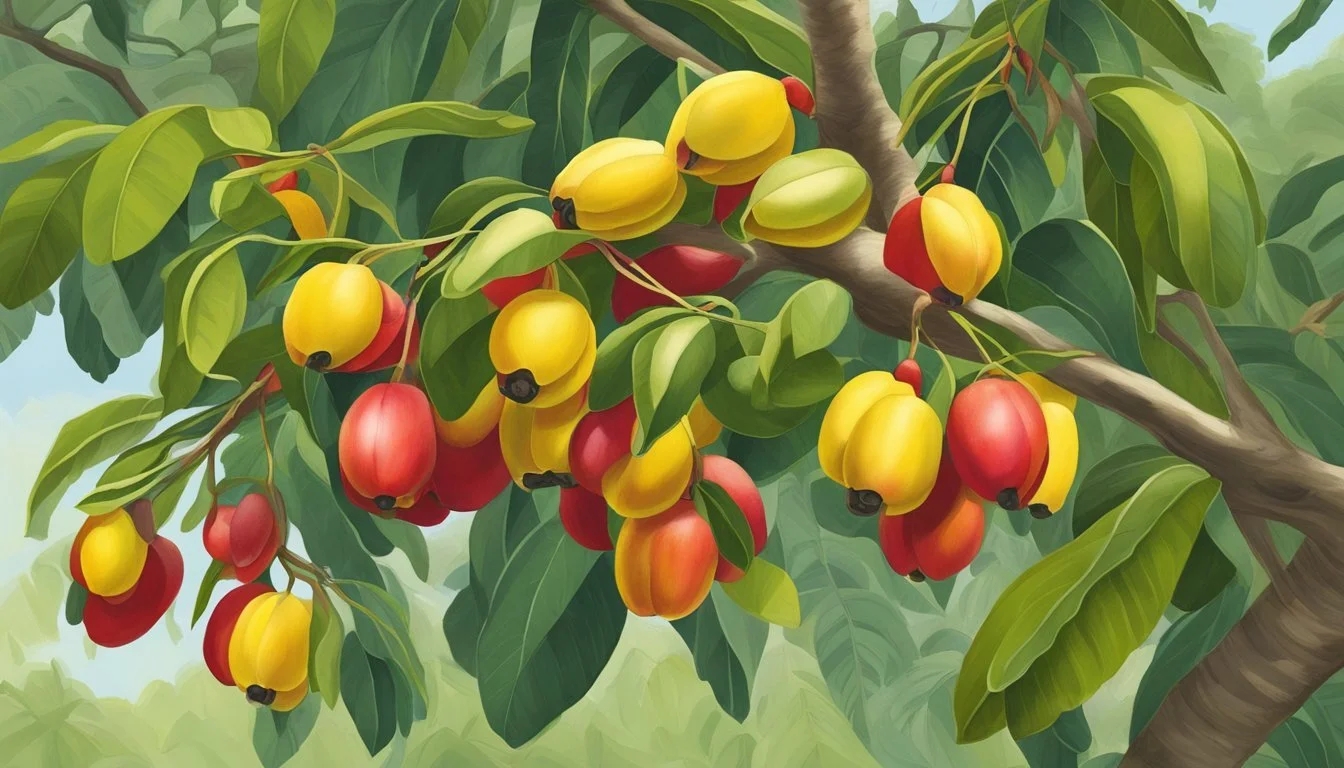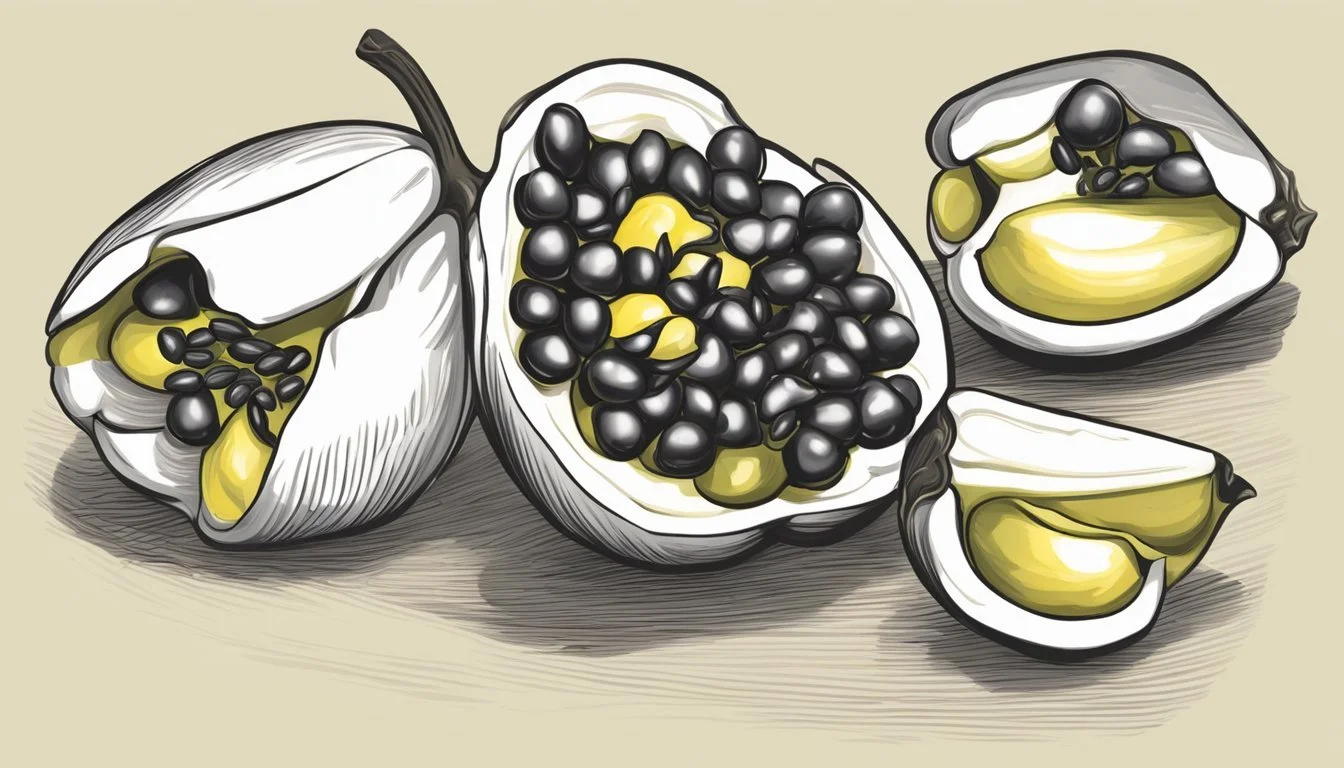How to Tell if Ackee is Ripe
Expert Tips for Perfect Harvesting
Ackee, the national fruit of Jamaica, has long intrigued both locals and food enthusiasts around the globe with its distinctive taste and texture. Native to West Africa, this fruit has made a journey across oceans to be a culinary staple in the Caribbean. Distinctively red or orange when ripe, ackee's appearance as it matures is a crucial indicator of its readiness for consumption. However, the task of discerning whether ackee is ripe is not solely a matter of observing its vibrant coloration. The appropriate ripeness of ackee is vital not just for savoring its flavor to the fullest but also for ensuring it is safe to eat, as unripe ackee can be toxic.
Understanding the stage of ripeness is also a safeguard to maximize the enjoyment and benefits of consuming this unique fruit. The ripeness influences not just taste but also the nutritional value the fruit yields. While acknowledged for its rich content of vitamins and minerals such as potassium, which supports overall health, ackee can also pose health risks if not prepared properly. Knowledge of the safe preparation of ackee is therefore as important as knowing how to identify and select a ripe fruit.
Key Takeaways
Ackee's color transition to red or orange signals ripeness.
Ripeness affects both ackee's flavor and safety for consumption.
Knowledge of ackee's preparation is as crucial as selecting the ripe fruit.
Identifying Ackee Fruit
The ackee fruit is integral to Caribbean cuisine and holds significant cultural value, especially in Jamaica. To fully understand ackee, it's essential to look at its botanical features, historical importance, origin, culinary uses, and health aspects.
Botanical Characteristics
The ackee, known scientifically as Blighia sapida, is a tropical evergreen tree's fruit. Ackee pods are typically bright red to yellow-orange when ripe and bear three seams, splitting open to reveal edible yellow arils. It's crucial to distinguish ripe ackee, as unripe fruits contain toxic substances that can lead to health issues.
Historical and Cultural Significance
Originally from West Africa, ackee was brought to Jamaica during the slave trade. Today, it is Jamaica's national fruit and a staple in Jamaican cuisine, with dishes such as ackee and saltfish being considered the national dish. Ackee holds historical relevance as it symbolizes a connection between Jamaica and West Africa.
Geographical Sources of Ackee
While indigenous to the tropical forests of West Africa, ackee is now most commonly associated with Jamaica and the wider Caribbean region. It thrives in tropical and subtropical climates, where it is cultivated for both internal consumption and export.
Culinary Context of Ackee
Ackee is a mainstay in Caribbean cuisine, with its buttery, nut-like taste and texture. The fruit is commonly paired with saltfish (cod), vegetables, and spices to make ackee and saltfish, a renowned dish in Jamaican cuisine. Ackee is also used in soups and other Caribbean dishes, showcasing its versatility in culinary applications.
Health and Nutritional Profile
Ackee is rich in essential nutrients, including potassium, vitamin C, calcium, and antioxidants. The fruit contributes to a balanced diet, offering minerals that support health and well-being. However, consumption of unripe ackee fruit can be harmful due to the presence of hypoglycin A, which underscores the importance of proper identification and preparation.
Determining Ripeness of Ackee
The ripeness of ackee is critical to its safe consumption and culinary quality, with ripe fruit displaying distinct visual, tactile, and olfactory cues.
Visual Indicators
Ripe ackee fruits are identifiable by their color and pod appearance. The pods transition from green to a bright red or orange hue when mature. One should observe the pods to ensure they are naturally opened; unripe ackee remains closed and is potentially hazardous if consumed. The seeds of a ripe ackee become visible as the fruit opens.
Tactile Assessment
The texture and firmness of ackee reveal its ripeness upon touch. A ripe ackee will have a somewhat soft feel to it, without being mushy. In contrast, unripe ackee tends to be firm to the touch. Care should be taken to gently press the fruit to assess its readiness without causing bruising or damage.
Olfactory Cues
A ripe ackee emits a mildly sweet aroma, signaling its readiness for consumption. The smell should not be overpowering or unpleasant. An absence of aroma or an off-putting smell could indicate that the ackee is either unripe or overripe and thus unsuitable for eating.
Development Stages
Ackee must be harvested when fully ripe, which is evidenced by the naturally opened pods. The unripe ackee fruit should never be forcibly opened as it contains toxic substances that dissipate only when the fruit has fully matured and opened on its own.
Safe Preparation of Ackee
Before indulging in the rich, buttery flavor of ackee, it is crucial to prepare it safely to avoid any potential health risks. This section outlines traditional cooking methods and how to handle toxicity concerns, select and clean the fruit, and cook it properly.
Traditional Cooking Methods
Ackee is traditionally boiled in water to ensure that any toxins present are reduced. Boiling is a key step in making dishes such as ackee and saltfish, a classic Jamaican dish where the fruit is often sautéed with seasoned saltfish after being boiled. It is not eaten raw or undercooked since heat is necessary to eliminate potential toxins.
Toxicity Concerns and Avoidance
Ackee contains the toxin hypoglycin, which can cause Jamaican vomiting sickness, a serious illness. To avoid ingestion of this toxin, it is vital to consume only ripe ackee. Unripe ackee and certain parts of the fruit, such as the seeds and the pink membrane, are poisonous. Canned ackee is typically a safe alternative as it is harvested and processed at the ripe stage.
Selecting and Cleaning Ackee
Selecting a ripe ackee is pivotal for safety and flavor. A ripe ackee is characterized by pods that turn a vibrant red to orange and naturally open to reveal the edible fruit inside. When cleaning, all inedible parts, including the seeds and the pink lining, must be removed. The fruit should be rinsed thoroughly in water to eliminate any debris or traces of toxins.
Cooking Ackee
Once cleaned, ackee is boiled in water until it is tender, which usually takes about 30 minutes. After boiling, it can be drained and incorporated into various recipes. Popular methods of preparation include incorporating it into scrambled eggs or sautéing with other ingredients. The key is to cook ackee at high enough temperatures to destroy any residual toxins, ensuring the dish is safe to consume.
Incorporating Ackee into Dishes
As a staple in Jamaican cuisine, ackee, when ripe, is a versatile fruit that can be incorporated into a multitude of dishes, offering a buttery and slightly nutty flavor. Understanding how to effectively pair this unique ingredient unlocks new culinary experiences.
Ackee in Traditional Jamaican Dishes
In Jamaica, ackee and saltfish is the national dish, typically featuring flaked salted codfish sautéed with onions, scotch bonnet peppers, and tomatoes then gently mixed with cooked ackee. Additionally, incorporating ackee into soups, stews, and dinners alongside dumplings, breadfruit, or rice and peas offers a hearty, comforting meal.
Ackee in Vegetarian and Vegan Recipes
Ackee's creamy texture makes it an excellent vegan substitute for eggs or cheese in dishes. It can be scrambled as an egg substitute or added to tofu scrambles with seasoning to enhance the flavor. Vegan ackee curries and salads benefit from its unique taste and texture.
Global Culinary Adaptations
Chefs around the world utilize ackee in global dishes, embracing its versatility. It's found in rice dishes reminiscent of fried rice, paired with aromatic spices. Ackee fruit is also included in various curries, coupling its buttery flavor with spicy and savory notes.
Fusion and Innovative Dishes
Inventive chefs have started to create ackee fusion dishes, combining traditional Jamaican flavors with other cuisines. Examples include ackee with veal in European-inspired dishes or ackee soups that infuse Asian flavors for a unique twist.
Pairing Ackee with Other Foods
Ackee pairs well with Jamaican cuisine staples like salted cod, as well as with starchy components like dumplings, rice, or breadfruit. When sautéed, it complements protein-rich foods and absorbs flavors from onions, scotch bonnet peppers, and tomatoes, culminating in a unique and satisfying culinary experience.
Potential Health Benefits and Risks
When examining Ackee's health benefits and risks, it is crucial to distinguish between the ripe and unripe states of the fruit due to its potentially toxic properties. Ripe ackee offers nutritional advantages, but acknowledging the toxins present in unripe ackee is essential for safety.
Nutritional Advantages
Ackee is a rich source of nutritional components including:
Vitamins: High in vitamin C
Minerals: Contains potassium and other essential minerals
Fats: Provides healthy fats which are important in a balanced diet
The fruit's nutritional profile supports bodily functions such as the immune system, while the fiber content aids the digestive system. The presence of antioxidants in Ackee can prevent cell damage.
Acknowledging Potential Toxins
Ackee can be toxic when unripe or improperly prepared. It contains hypoglycin A, which can cause Jamaican vomiting sickness, a potentially fatal condition that causes vomiting, hypoglycemia, and even seizures. Careful preparation to remove the seeds and arils, which contain higher levels of toxins, is crucial.
Impact on Chronic Diseases
Regular consumption of ripe ackee may have the following impacts on chronic diseases:
Blood sugar control: The fiber and protein in ackee can aid in blood sugar regulation, beneficial for people with diabetes.
Heart health: The healthy fats and low cholesterol levels in ackee may support a healthy cardiovascular system and contribute to maintaining optimal blood pressure levels.
Regulations and Availability
Regulations: Due to its toxic potential, ackee is regulated in many countries. The U.S. FDA has specific guidelines for canned ackee products to ensure safety.
Availability: Fresh ackee is often available in tropical climates, especially Jamaica. In other regions, where to buy ackee is limited to canned products in international or specialty food stores.
Canned Ackee: When purchasing canned ackee, choose reputable brands that adhere to safety regulations to avoid the risk of toxins.
Conclusion
Determining the ripeness of ackee is essential for both its taste and safety, as unripe ackee contains toxic hypoglycin. Ripe ackee is identified by a vibrant red or orange color, and it naturally opens, revealing black seeds and yellow flesh. Only consume ackee that has opened on its own—this is a critical safety step.
When preparing ackee, cooking is just as important as selecting a ripe fruit. Properly cooked ackee enhances its flavor and ensures that any remaining toxins are eliminated. Ackee is traditionally boiled or sautéed until it reaches a soft, creamy texture.
Before using ackee in any dish, individuals should be well-informed about its proper preparation methods. Here are some key points to remember:
Color: Ripe ackee will have a bright red or orange hue.
Opening: The pods should open naturally.
Texture: When cooked, it should be soft and creamy.
By adhering to the above information, consumers can safely enjoy ackee, savoring its unique flavor and nutritional benefits.







